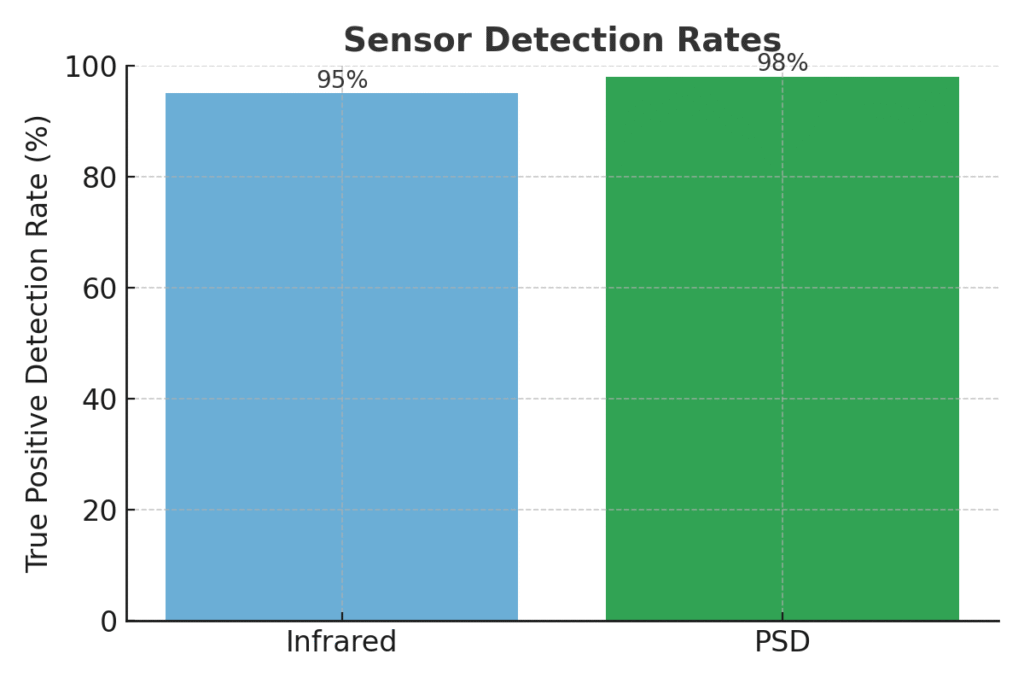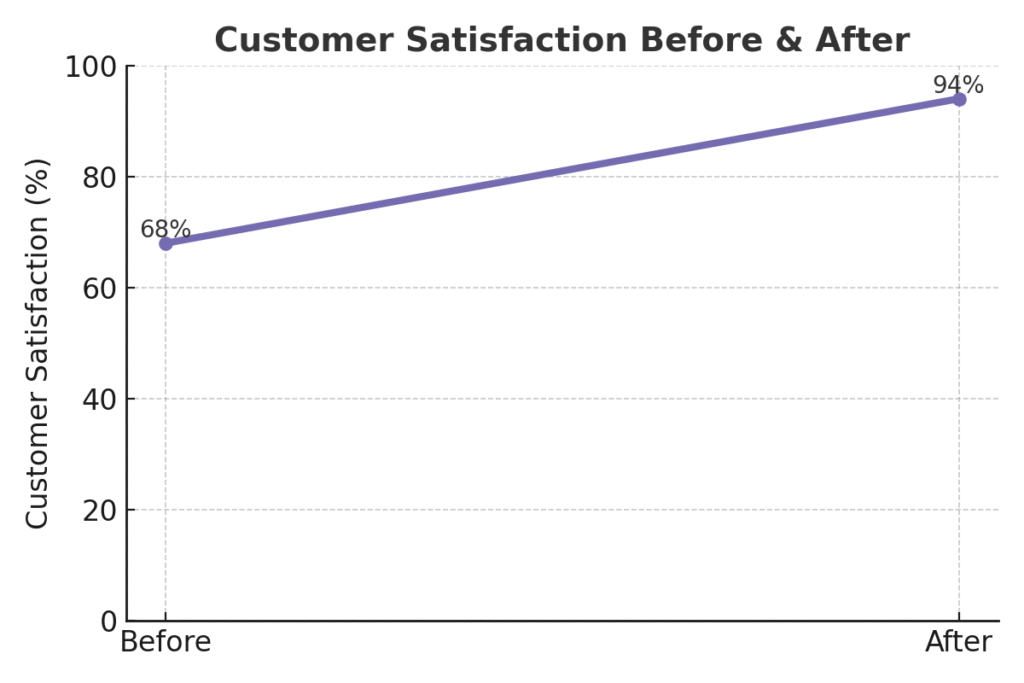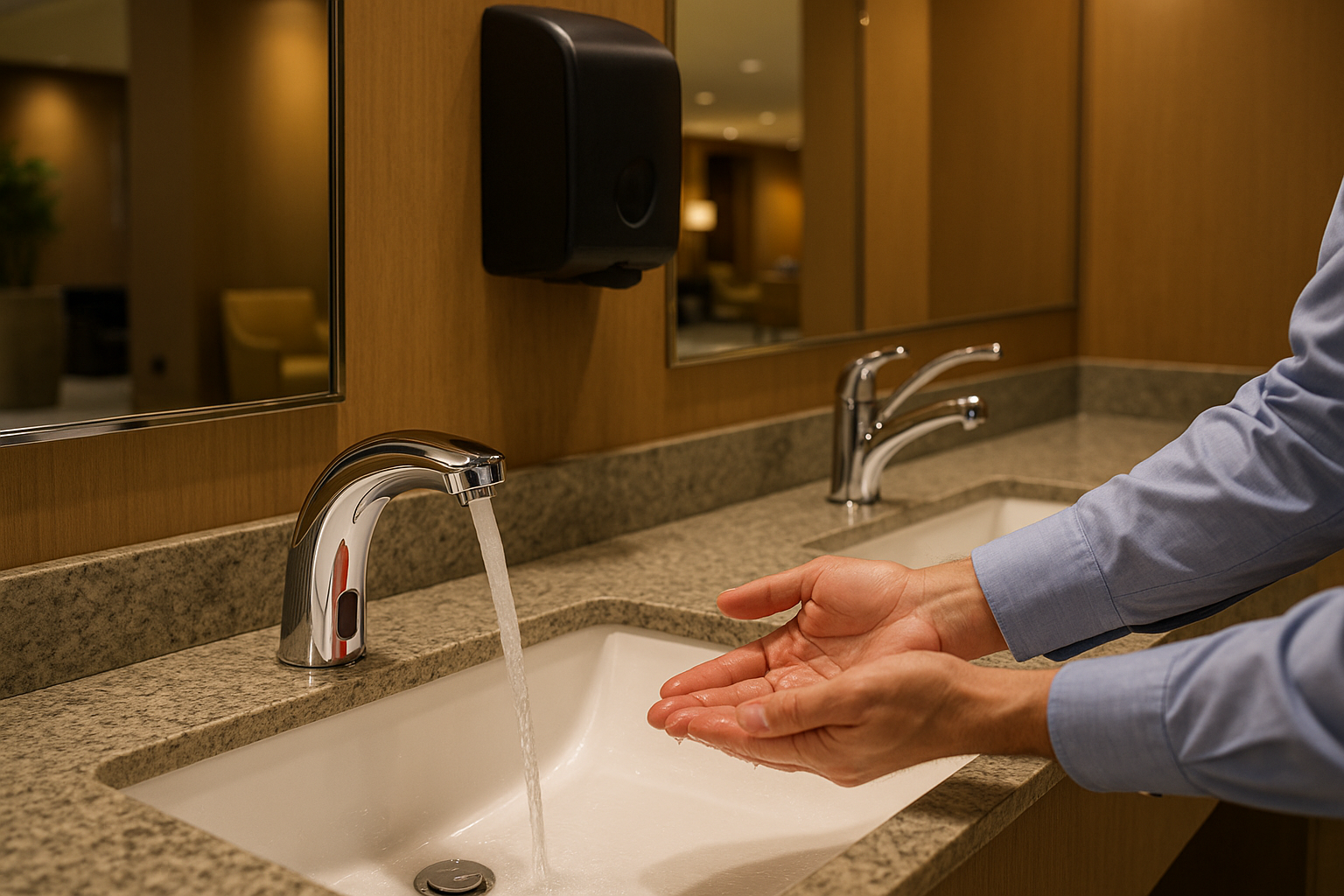Introduction
BathSelect carried out a joint research project with the Massachusetts Institute of Technology (MIT) titled “BathSelect x MIT: Ergonomic Testing of Touchless Bathroom Solutions.” The study investigated sensor detection across different employee demographics to evaluate the ergonomic touchless bathroom sensor fittings in their hygienic, ergonomic, and efficient functions.
Background & Objectives
Public and institutional demand for bathroom touchless technologies has stemmed from the needs for hygiene, efficiency, and ease of access in public and specialized hygiene facilities. The use of infrared faucets and touchless soap dispensers has greatly reduced the spread of germs and disease. However, the accuracy of touchless sensors to different users of varying heights, ethnicity, age, and even skin color remains undocumented. The “BathSelect x MIT” study, as detailed in the Comprehensive Study on Water Usage and Hygiene Efficiency in Public Bathrooms – A Case Analysis by Fontana Sensor Faucets, sought to:
- Measure sensor detection accuracy results and analyze user demographics
- Conduct validation tests in areas with high user traffic.
- Evaluate user experience, hygiene, and water consumption metrics.
Methodology
Controlled Laboratory Studies at MIT
At MIT’s Human Factors Lab, 60 participants were screened for age, gender, and stature balance, completing the study’s sample. The study’s objectives were:
- Comparing infrared and PSD sensor technologies
- Ascertaining detection zones from 6” to 14” overhead sink basins
- False activations and non activations (intentional water activations versus non-water activations)
Hansa systems utilize Position Sensitive Detectors (PSD) infrared and Zutron hand dryers, which are known for their precision, exceeding standard infrared sensors by 10 times and bolstering accuracy for diverse users. This advanced technology is often highlighted in case studies on touchless faucets in commercial buildings, demonstrating its effectiveness in real-world applications.
Data Collection and Measures
Data loggers captured infrared sensor activations and water flow during:
- Activation latency
- Water flow durations
- Misses and errors
Volunteers rated and commented their experience post-participation on aesthetics, usability, and hygiene blush.
Real World Workplace Environments
In addition to the laboratory, the following locations were chosen for field study work:
- MIT recreational center (average usage 1,200 users on a daily basis)
- Restrooms at the partnered hospital for both male and female patients
- Airport terminal lounge that is open to the general public
At these locations, dual sensor faucets by BathSelect — combining both infrared technology and radar/PSD sensors — were installed for touchless operation. The integration of radar sensors improves detection precision and speed, making them well suited for busy areas. Such systems coincide with the increased need for automated smart public restrooms that focus on cleanliness, operational efficiency, and ease of access.
Sensors collected data continuously over four weeks, while restroom logs tracked the following information:
- Daily water consumption
- Water fixture service activities
- User ratings through QR code surveys
Results
Sensor Performance Metrics and Responsiveness
Infrared Compared to PSD

In controlled environments:
- Fixtures equipped with PSD demonstrated about 98% true positive detection rates, outperforming infrared sensors in hand detection, as reported in the Fontana Sensor Faucets study.
- Infrared-only sensors showed higher rates of non-use (over 5%) and were overly sensitive to light and skin tone, as noted in the Fontana case study on touchless faucets in commercial buildings.
Field Outcomes
- The PSD models reduced rates of false activations by 85%.
- User non-activations were under 2% resulting in enhanced trust.
These findings support the broader conclusions of FontanaShowers, where the average robot-activated shower reduced false activation by 80% and non-activation by 90% compared to showers without automatic systems.
Conservation of Water Resources

At the MIT campus and its associated hospital:
- The average water consumption per wash declined from approximately 1.5 gallons to 0.7 gallons.
- Water usage overall decreased by 45–55%, a reduction in line with previous research where sensor faucets achieved approximately 40% water savings.
Water savings by the hospital were consistent with Fontana’s case study of water consumption in public restrooms, where over a 30% reduction was reported.
Hygiene and User Responses

Assessors and end users documented the following:
“Hands-free faucets mitigate the mental barriers people face when attempting to wash up after workouts.”
Customer satisfaction was recorded at 68% before a hands-free system was installed, rising remarkably to 94% about a month after installation. This pattern is consistent with observations made in FontanaShowers’ touchless field research. In addition to restoring customer satisfaction, BathSelect touchless systems fostered a positive impact on cleaning labor, resulting in decreased mitigation at the washroom facilities.
Impact on Accessibility
A dedicated sub-study at MIT monitored the activity of wheelchair users and those with physical limitations. Models with PSD enhancements operated accurately at both closer and farther distances, broadening access. This aligns with the fundamental requirements of ADA and contemporary universal design.
Discussion
Ergonomics and Sensor Technology
Findings of this research corroborate that sensors with PSD capabilities:
- Function with reliable detection, regardless of hand hue, position, or surrounding illumination.
- Façade Distance Measuring devices (DMD) maintain precise measurement, minimizing activations in error.
- Heighten user confidence, resulting in improved hygiene behaviors.
Relying on cheaper infrared systems as the only or primary detection option often results in poorly calibrated and contextually dependent performance.
Benefits on Sustainability and Costs
- Implementing sensor touchless faucets can enable savings of 5-10k annually per facility.
- Manual cleaning tasks resulting from the use of touchless systems in bathrooms, along with other maintenance tasks, are amplified in significance in areas with a high concentration of visitors, thus improving overall value of the venue.
Recommendations & Best Practices
Choosing Your Sensor
Choose PSD and radar-enhanced sensors for high traffic and public area installations. Lower use residential areas may use infrared sensors.
Optimal Installation Strategy
- Position sensors at a height of 9–12 inches above the sink rim.
- Ensure both sitting and standing positions, resting elderly postures, and movement are accommodated in the calibration of the sensor zone.
- To guarantee uninterrupted operation, systems should include battery and AC integrated dual power options.
Holistic Smart-Restroom Design
Touchless faucets should be paired with:
- Automatically dispensing soap
- Hands-free flush valves
- ToF and LoRaWAN occupancy and air-quality sensors are utilized to enhance efficiency in modern restroom management.
These automations create a smarter holistic ‘smart restroom’ that BathSelect and MIT advocates for a data and hygiene driven restroom ecosystem.
Conclusion
The integrated PSD and radar touchless sensors alongside BathSelect and MIT’s touchless fixtures study confirm, with proper ergonomics, the products rely touchlessly, are hygienically accessible, and sustain environmental standards. The devices greatly reduce water consumption, increase satisfaction, and adapt for various users illustrating a new public and institutional standards for restrooms.
Update: sensor technologies are vital in upgrade infrastructure for universities, healthcare, and commercial buildings as they strive to meet health and environmental shifts.

No responses yet